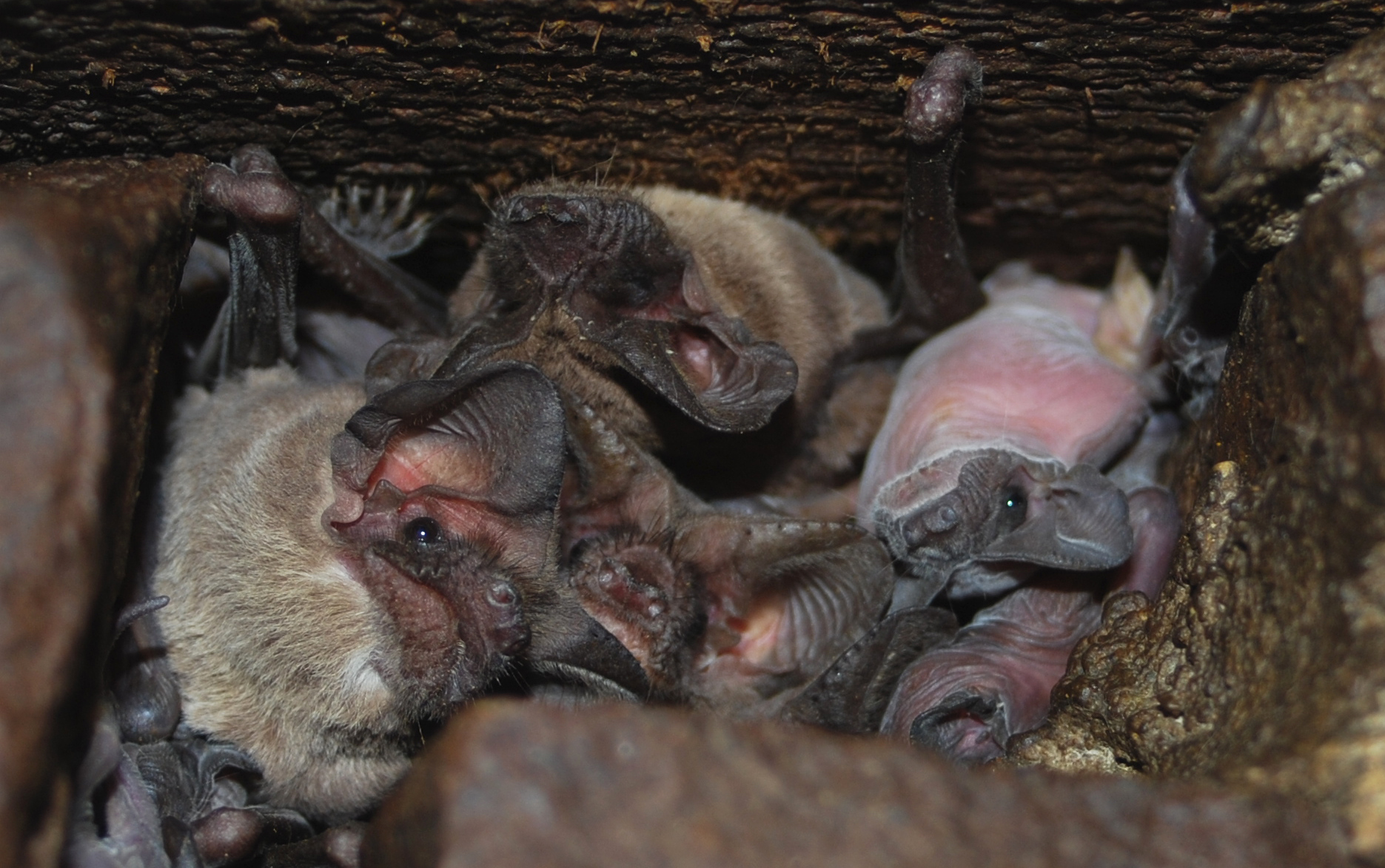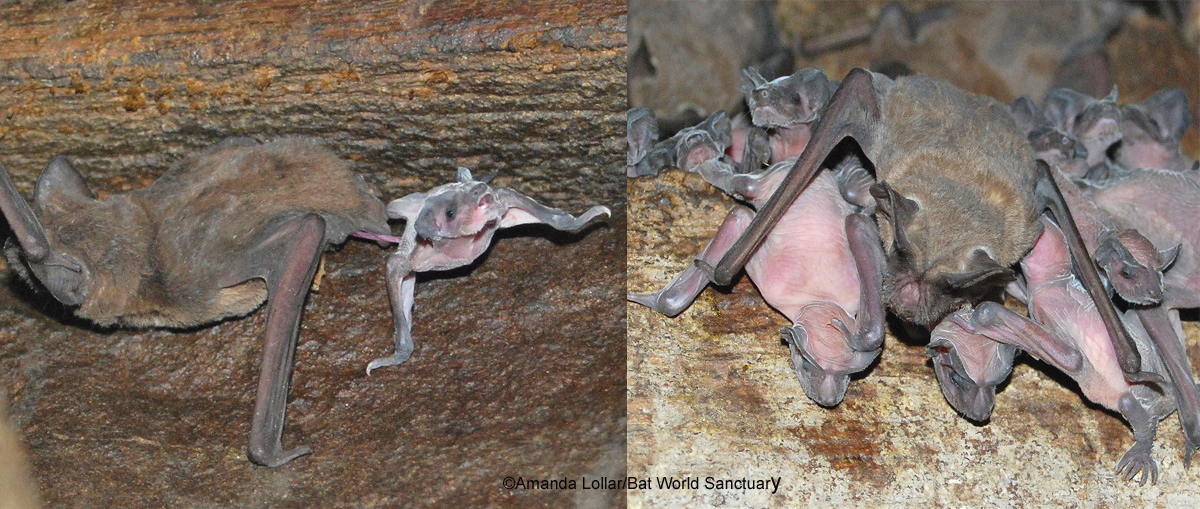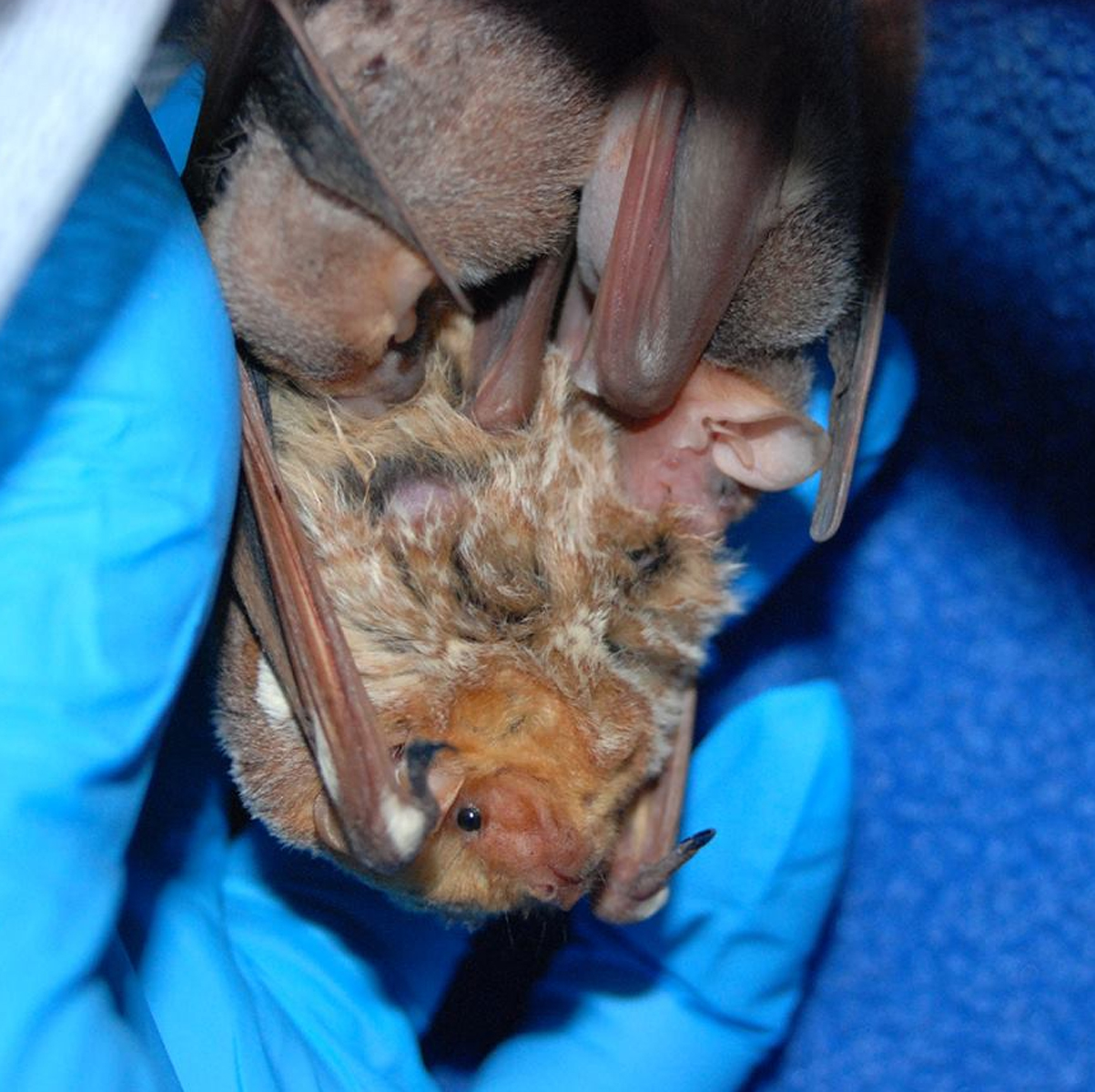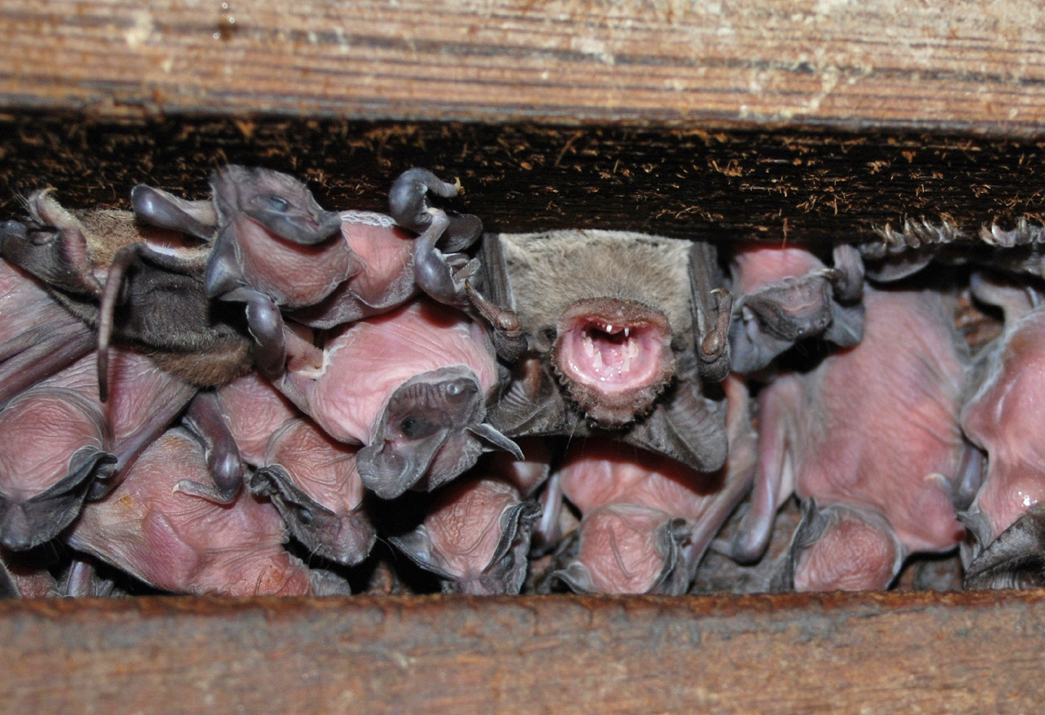Mother’s Day is coming up so we’re sharing a few photos taken from our wild sanctuary as well as photos of mother bats we have rescued over the years. Descriptions are below each photo.

Brazilian free-tailed bat moms give birth to a single young each summer. Free-tailed pups are born naked and pink with their eyes open and are about the size of an almond at birth. Prior to the pups being born, the pregnant mothers form a nursery colony where all the bats snuggle together to keep warm (baby bats actually need temps of 90 to 110 degrees Fahrenheit to maintain a proper growth rate). After their baby is born the moms will take turns foraging for insects while other moms stay behind to babysit. In 10 to 12 weeks they are adult-sized and foraging for insects on their own (much to the relief of their mothers).
This beautiful Egyptian fruit bat mom was rescued from a zoo closure while she was pregnant. She gave birth shortly after arriving to us in 2012. Egyptian fruit bats typically have one pup but may have twins on occasion. Like all bats, they are very good mothers, doting on their babies by grooming them encouraging them to fly when the time comes. These moms carry their pups under their wing until the baby is about a month old. At that time the mom will leave the pup on the branch of a tree (or other spot she feels is safe), then she will fly a short distance away and call out to the baby until it flies to her. After several practice sessions the pup is usually flying on its own, however, it will continue to nurse and cuddle with mom for the next three months. Babies and their mothers form tight family units and continue to stay together year after year.
On the left, this Brazilian free-tailed bat mom and her newly born pup and still attached by the umbilical cord. Once the placenta is expelled, it will gradually dry up and fall up after 24 hours. Her single pup is nursing in the second photo. The pups surrounding this mom belong to other mothers.
Free-tailed bats have only one pup per year. When these pups are born they are 1/3 the size of the mother (the equivalent of a 120 lb woman having a 40 pound baby). Not only does the mother have to fly and forage for enough food to keep herself and her unborn fetus nourished, she has it even rougher after her baby is born. She then has to keep her own weight up while also making enough milk to feed a baby that will be full grown within 8 to 10 weeks. In the last two weeks before her pup is weaned, she will be nursing a bat as big as she is.
Free-tails eat an enormous amount of insects each night, including harmful moths, flying ants, flying termites, mosquitoes, and beetles. Each bat is capable of eating up to 5,000 flying insects per night. A mother free-tail caring for her baby must eat double that amount (10,000 insects) per night just to keep herself and her baby alive. Once her baby is full grown and on it’s own, it can consume over 25 million harmful insects during its lifespan of 15 to 20 years.
Free-tailed bats are not only critical to our environment, they are highly emotional creatures. They are as smart as dolphins, using over 25 different vocalizations to communicate. They even use these vocalizations to form syntax. A mother bat who loses her baby will grieve outwardly with mournful cries for days afterward. Some mothers, suffering the loss of a baby, will try to steal another mother’s baby, and some mothers will allow a mother who has lost her pup to share in caring for her own pup.
Red bat moms have it particularly rough as they may have up to 5 babies at a time. Immediately after the pups are born moms have to forage for more food than normal in order to sustain herself and produce enough milk to feed her growing babies. On top of that, their pups are full grown and starting to fly in six weeks, which means that mom has to eat more and more food as her pups rapidly grow. Toward the end she is nursing babies that are as large in body size as she is.
Red bats roost in trees, which makes their lives harder still because they attacked quite often by both blue jays and crows. Mother red bats will attempt to protect her babies by covering them with her wings and if that doesn’t work she will gather all of her pups up and try to fly away with them. This can sometimes be accomplished successfully with newborn babies, but when pups are older the weight is too great for mom to carry and the entire little family can end up on the ground (where they are often found by people or pets). If they aren’t rescued, grounded moms will stay with her babies, sacrificing herself in the process.
While it may look like this Brazilian free-tailed bat mom is screaming for mercy, she is actually calling out for her pup. She is surrounded by babies who belong to other mothers. When her pup hears her call out he/she will call back until they find each other among the crowd. A mom and her baby will actually recognize each others voices and scents among hundreds (and even millions) of other mothers and babies.
*****
Bat World Sanctuary is an Amazon Associate. Products listed here help us earn revenue to support our rescue efforts. When purchased (and at no additional cost to you) Amazon will donate as much as 10% to our sanctuary. Click to purchase through Amazon.com.






